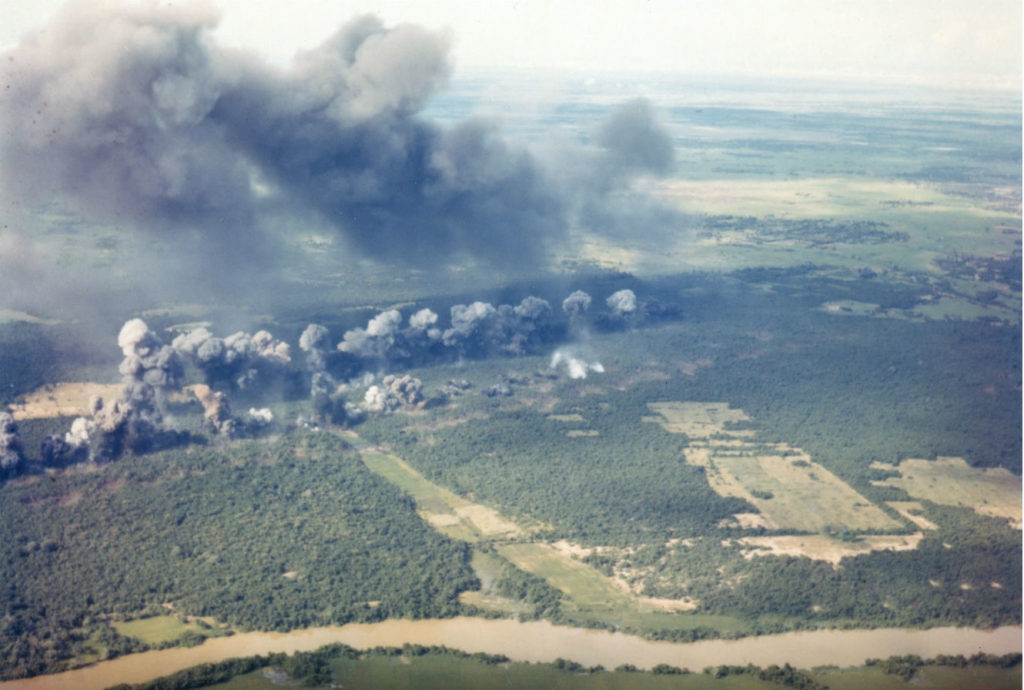Facts About the Vietnam War, Part I: They Didn’t Fight with One Hand Tied Behind Their Backs

When the documentary series The Vietnam War premieres this Sunday, it will no doubt open a new chapter in America’s long debate on that war and what it meant. Writing in The New York Times a few months ago, directors Ken Burns and Lynn Novick expressed the hope that in this new conversation, Americans will focus on what the Vietnam experience can teach about “courage, patriotism, resilience, forgiveness and, ultimately, reconciliation.”
The article did not say anything about teaching facts, but one hopes that was on their agenda, too. The documentary series provides a rare chance to acquaint a mass audience with realities that have grown blurry in the national memory. In this series of articles, I will present my thoughts on misleading myths I hope the filmmakers will correct.
We’ll begin with the myth that American troops fought the war with one hand tied behind their backs. Proponents of this belief hold that the United States failed to win in Vietnam because it did not use enough of its military power. But those who think this might do well to remember some statistics that do not indicate anything remotely resembling an unduly limited war effort:
During the Vietnam War the United States dropped approximately twice as many tons of bombs in Southeast Asia as the Allied forces combined used against both Germany and Japan in World War II. Between 1964 and 1973, U.S. aircraft expended over seven million tons of bombs in Vietnam, Laos, and Cambodia, compared to 3.4 million tons dropped by the United States and its allies in all of World War II. There were restrictions on some targets, particularly in areas of North Vietnam that were close to China and where U.S. leaders were concerned that American airstrikes might provoke a Chinese response. But those do not change the fact that the American air campaign in the Vietnam war was the heaviest in the history of war, by a very large margin.
U.S. forces used huge amounts of ordnance in the ground war as well, on a level the Army’s logistics command described in one study as “devastating conventional firepower unparalleled in military history.” Noting that American commanders also faced virtually no limit on their ability to move troops, munitions, and supplies, the study’s authors added:
The logistics scene was characterized by almost unlimited supply, remarkable [sic] high operational readiness rates as applied to equipment, a seemingly endless flow of ammunition and petroleum and immunity for the most part from external fiscal restraints.
The scale of those resources is even more astonishing when you compare them with the enemy’s. For most of the period of U.S. involvement, the Americans and their South Vietnamese allies used air and ground munitions at a rate several hundred times higher than the Communist side. Pentagon records for 1969, for example, show that U.S. forces expended nearly 130,000 tons of ammunition a month. About three-fifths of that was delivered by air and the rest in ground fire. By comparison, the highest Communist firepower expenditure of the war, not reached until 1972, was about 1,000 tons a month.
That overwhelming superiority in firepower and logistical capability makes it hard to argue that Americans could have won the war by doing more of what they were already doing in Vietnam. The far more logical conclusion is that the American style of warmaking could not win that war. If it could, we’d have won it.
Arnold R. Isaacs covered the final years of the Vietnam war as a war correspondent for the Baltimore Sun. He is the author of Without Honor: Defeat in Vietnam and Cambodia, Vietnam Shadows: The War, Its Ghosts, and Its Legacy, and From Troubled Lands: Listening to Pakistani Americans and Afghan Americans in Post-9/11 America. Isaacs lives in Anne Arundel county, Maryland.
Image: Air Force

